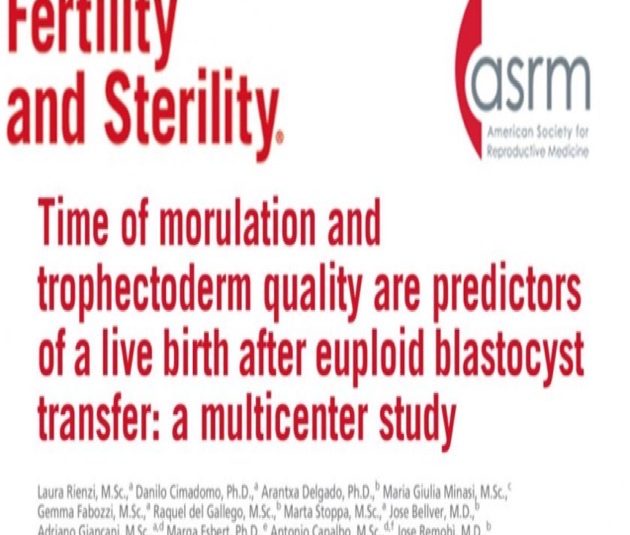
Time of morulation and trophectoderm quality are predictors of a live birth after euploid blastocyst transfer: a multicenter study
Laura Rienzi, Danilo Cimadomo, Arantxa Delgado, Maria Giulia Minasi, Gemma Fabozzi, Raquel del Gallego, Marta Stoppa, Jose Bellver, Adriano Giancani, Marga Esbert, Antonio Capalbo, Jose Remohì, Ermanno Greco, Filippo Maria Ubaldi, and Marcos Meseguer
Abstract
Objective: To investigate whether the morphodynamic characterization of a euploid blastocyst’s development allows a higher predic- tion of a live birth after single-embryo-transfer (SET).
Design: Observational cohort study conducted in two phases: training and validation.
Setting: Private in vitro fertilization centers.
Patient(s): Euploid blastocysts: 511 and 319 first vitrified-warmed SETs from 868 and 546 patients undergoing preimplantation genetic testing for aneuploidies (PGT-A) in the training and validation phase, respectively.
Intervention(s): Data collected from time of polar body extrusion to time of starting blastulation, and trophectoderm and inner-cell- mass static morphology in all embryos cultured in a specific time-lapse incubator with a continuous medium. Logistic regressions conducted to outline the variables showing a statistically significant association with live birth. In the validation phase, these variables were tested in an independent data set.
Main Outcome Measure(s): Live births per SET.
Result(s): Theaveragelivebirthrate(LBR)inthetrainingsetwas40%(N1⁄4207/511).Onlytimeofmorulation(tM)andtrophectoderm quality were outlined as putative predictors of live birth at two IVF centers. In the validation set, the euploid blastocysts characterized by tM <80 hours and high-quality trophectoderm resulted in a LBR of 55.2% (n 1⁄4 37/67), while those with tM R 80 hours and a low- quality trophectoderm resulted in a LBR of 25.5% (N 1⁄4 13/51).
Conclusion(s): Time of morulation and trophectoderm quality are better predictors of a euploid blastocyst’s reproductive competence. Our evidence was reproducible across different centers under specific culture conditions. These data support the crucial role of moru- lation for embryo development, a stage that involves massive morphologic, cellular, and molecular changes and deserves more inves- tigation.
Key Words: Blastocyst, embryo selection, euploid, morula, time-lapse microscopy